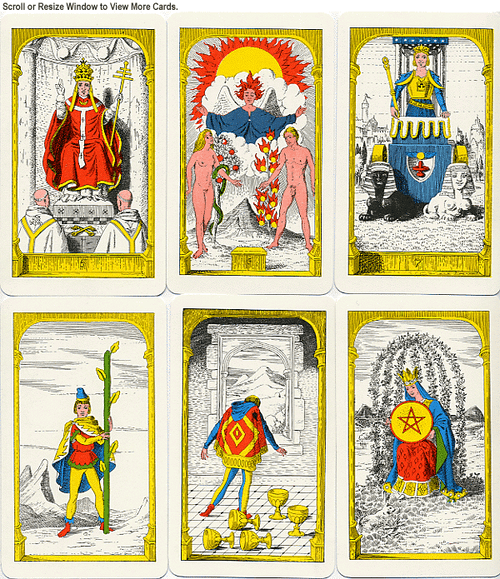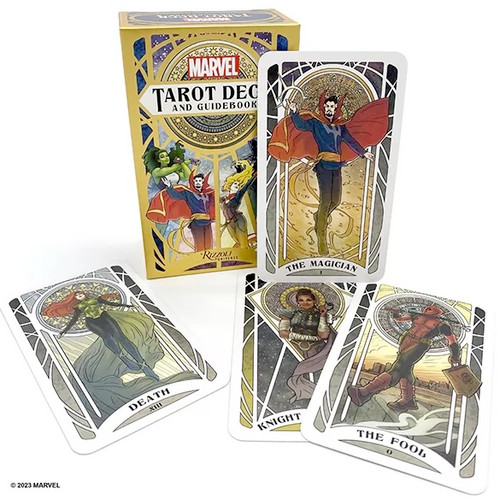In the late 1950s, Roland Berrill -- the founder of the MENSA organization -- came up with the idea of the Royal Fez tarot deck. He hired artist Michael Hobdell to execute the artwork. Hobdell died shortly after completing the project, and Berrill died before his original print run of 500 decks was marketed. Eventually, around 1970, the decks were picked up and marketed by Rigel Press, Ltd. Later, U.S. Games and AGMueller published a non-limited edition (ca. 1975) that remained in print for a number of years.
Berrill's deck was purportedly based on a legend that tarot was a remnant of secret societies that once existed in Fez, Morocco. Indeed, the the black-and-white backgrounds of the images might suggest Moroccan landscapes, architecture, and culture. However, the foreground imagery is undeniably lifted from Waite and Smith's work. The Majors are numbered, but untitled. The suited cards have neither title nor number, relying on the viewer to determine the card's suit and position in the sequence from a review of the illustration elements.







